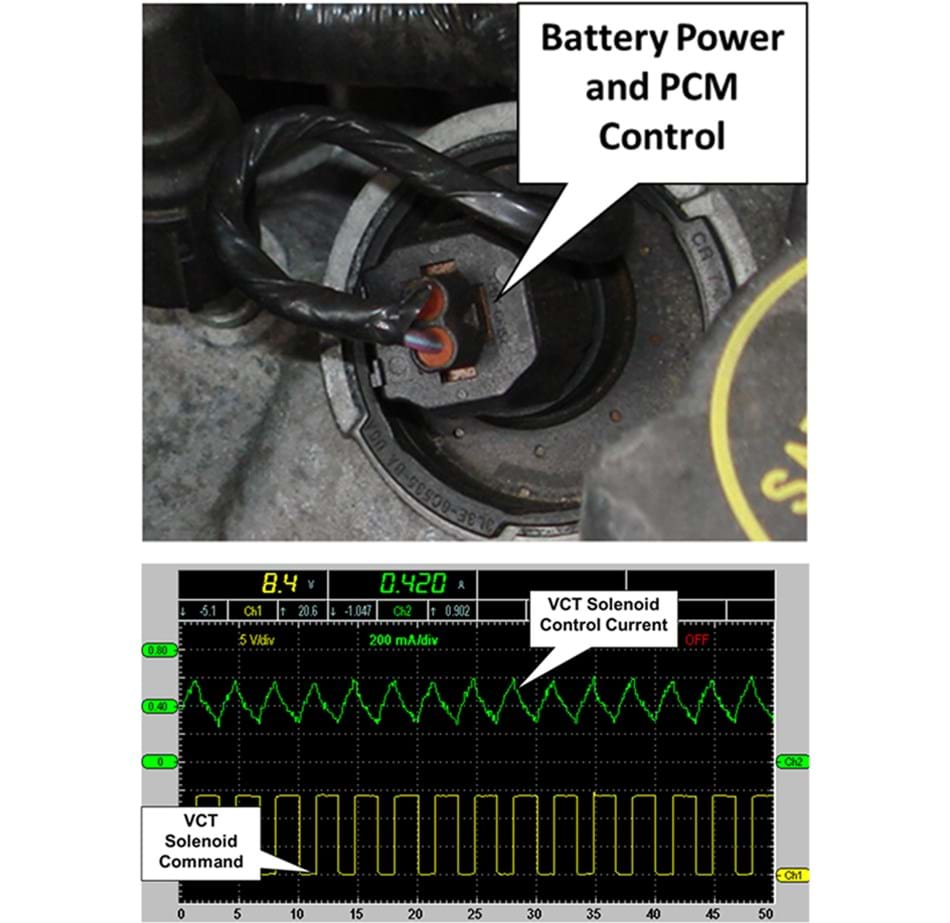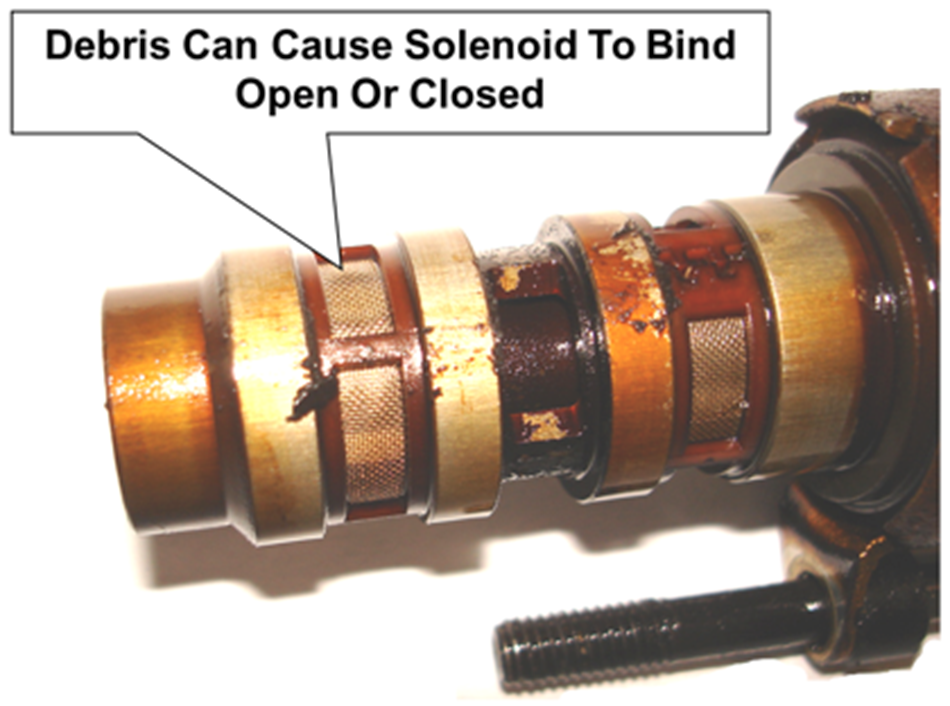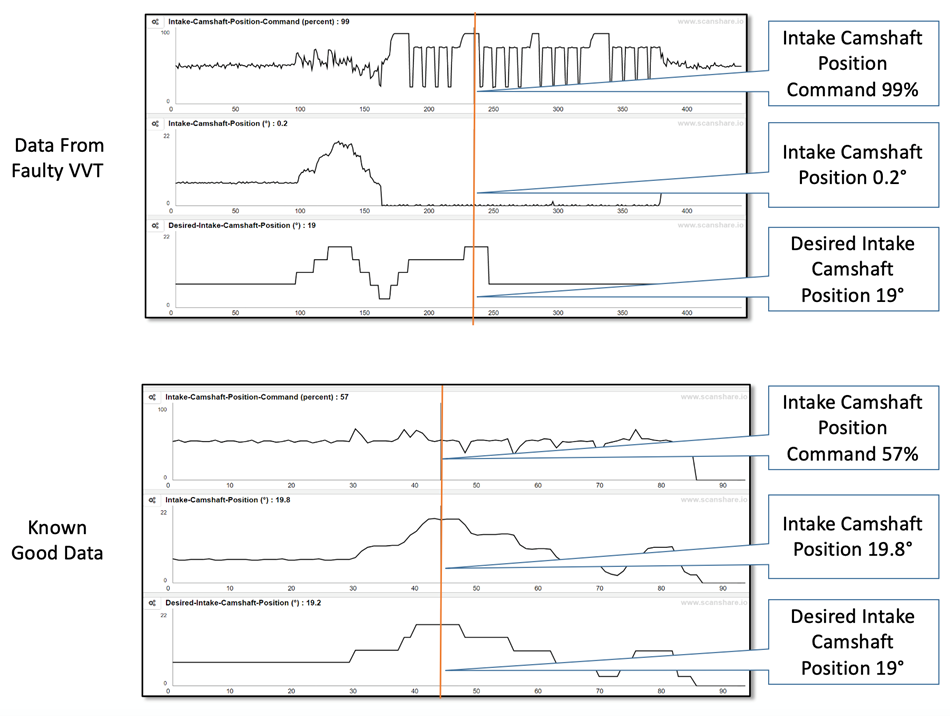Variable Valve Timing (VVT) Operation

VVT Solenoids and Sprockets
What do Variable Valve Timing (VVT) Solenoids (Oil Control Valves) and Sprockets (Actuators or Phasers) do? The VVT Solenoid meters the oil flow to control the actuation of the VVT Sprocket. The VVT Sprocket mechanically shifts the position of the camshaft. This mechanical shifting (or phasing) of the camshaft affects the efficiency of the engine in order to produce more power in certain situations, while minimizing emissions in others. While diagnosing system faults, it is important to check the oil level, the oil condition and the oil pressure. Many systems are oil-driven and a low oil level can cause them to be starved for oil. Be sure to verify oil pressure when dealing with VVT faults. If an oil specification is not found in service information, most VVT systems require at least 25 psi at hot idle for proper operation.
Typical Solenoid Testing
The VVT Solenoids (Oil Control Valves) are generally located on and/or around the cylinder head. The typical wiring for an oil control solenoid is battery voltage power supply and the control circuit. The actuated position is varied based on the PCM commands to advance or retard the engine’s valve timing.
Note: It is always recommended to refer to service information for the specific vehicle you are working on.

Power Tip - Common Causes of Failures
- Lack of regular scheduled engine oil and filter service
- Incorrect engine oil added to the crankcase
- Restricted internal OCV (oil control valve) filter

Typical Scan Data Testing
The VVT Sprockets are located on the camshaft(s). At the appropriate time, the ECM will send a duty cycle command (between 0-100%) to the solenoid, which will cause the spool valve inside the solenoid to move. Oil will then be directed to the actuators (sprockets) causing camshaft phasing. The computer monitors this movement based on input from the cam and crank sensors. This can be viewed in many vehicles using scan tool data. Desired movement by the computer should be matched closely by actual movement of the actuator.

Power Tip - The ECM can command the actuator to any position desired. Once the cam is phased at the commanded angle, the ECM will send a new duty cycle command to the solenoid that will position the spool valve such that the same amount of oil pressure will be present in both the actuators advance and retard cavities. While the duty cycle for the hold command may vary between 35% and 55%, it should hold fairly steady.
Power Tip – When replacing a solenoid or sprocket, it is recommended that, if equipped with multiple solenoids or sprockets, they also be replaced to prevent comebacks. An oil and filter change should also be performed.
